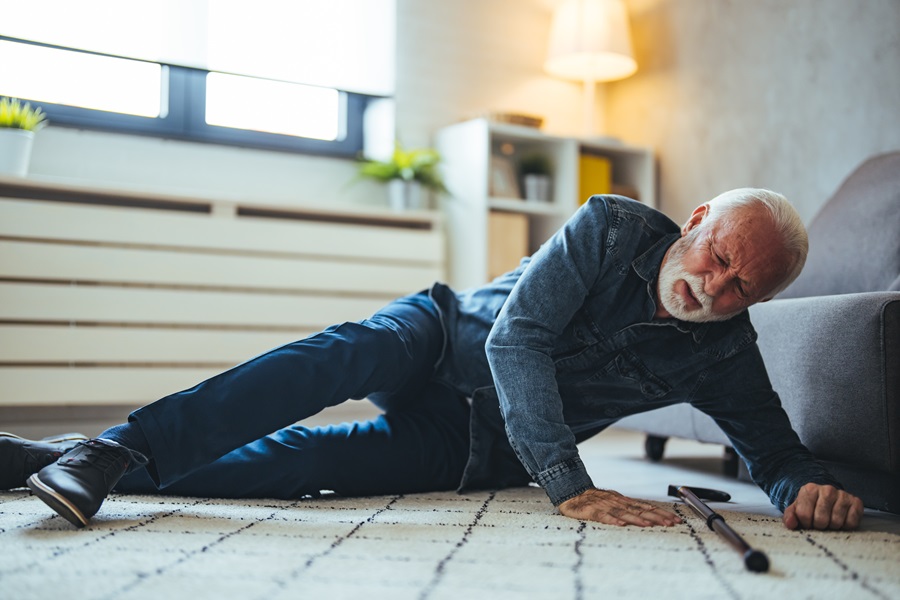As individuals age, maintaining independence in daily activities becomes increasingly important. However, the bathroom, with its slippery surfaces and hard fixtures, poses significant risks for the elderly. Understanding and implementing bathroom safety for elderly is crucial to prevent accidents and promote a secure living environment.

Understanding the Importance of Bathroom Safety
Bathrooms are one of the most hazardous areas in the home for seniors. According to National Institute on Aging, falls are a leading cause of injury among older adults, and bathrooms are a common site for these accidents. Therefore, ensuring bathroom safety for elderly is not just about comfort but also about preventing potentially life-threatening injuries.
Common Bathroom Hazards for Elderly
Several factors contribute to the dangers posed by bathrooms, including wet and slippery floors, lack of support structures, and inadequate lighting. Recognizing these hazards is the first step in creating a safer environment.
Slippery Surfaces
Wet floors increase the risk of slipping. Installing non-slip mats and using absorbent rugs can significantly reduce this risk.
Lack of Support
Without proper support, such as grab bars, seniors are more prone to losing balance. Installing sturdy grab bars near toilets and in showers provides necessary stability.
Inadequate Lighting
Poor lighting can obscure hazards and make navigation difficult. Ensure all areas, especially around the toilet and shower, are well-lit.
Essential Bathroom Safety Features
Implementing certain features and modifications can enhance bathroom safety for elderly. These changes are often simple yet effective in preventing accidents.
Grab Bars and Handrails
Installing grab bars and handrails is a fundamental step in promoting elderly safety. These provide support when moving around, reducing the risk of falls.
Non-Slip Flooring
Replacing slippery tiles with non-slip flooring materials helps prevent slips. Alternatively, applying non-slip treatments to existing floors can be a cost-effective solution.
Walk-In Tubs and Showers
Walk-in tubs and showers eliminate the need to step over high thresholds, reducing the risk of tripping. Additionally, they often come with built-in seating, providing extra stability.
Shower Chairs and Transfer Benches
These assistive devices offer support and stability while bathing, making it easier for seniors to maintain balance and reducing the risk of falls.
Practical Tips for Bathroom Safety
Beyond structural modifications, certain practices can further enhance safety, ensuring a more secure experience for the elderly.
Regular Maintenance
Regularly check for leaks and repair them immediately. Water accumulation can create slippery conditions, increasing the risk of accidents.
Use of Contrasting Colors
Using contrasting colors for fixtures and flooring can aid those with visual impairments in navigating the space more easily.
Accessible Storage
Ensure that commonly used items are stored within easy reach to minimize the need for stretching or climbing, which can lead to falls.
Technological Aids for Bathroom Safety
Modern technology offers various solutions to enhance bathroom safety for elderly. These tools provide additional layers of security and convenience.
Emergency Alert Systems
Installing emergency alert systems in bathrooms allows seniors to quickly call for help if needed. These systems can be life-saving in the event of a fall.
Automatic Lighting
Motion-sensor lights improve visibility and reduce the risk of accidents during night-time bathroom visits.
Smart Assistants
Devices like smart speakers can assist with controlling lights and other fixtures, reducing the need for physical interaction with potentially hazardous switches.
Creating a Safe Bathroom for Seniors
Combining physical modifications, practical tips, and technological aids creates a comprehensive approach to bathroom safety for elderly. This holistic strategy not only prevents accidents but also enhances the quality of life for seniors.
Family and Caregiver Involvement
Family members and caregivers play a crucial role in ensuring bathroom safety. Regularly assessing the bathroom environment and making necessary adjustments is vital to maintaining a safe and supportive space.
Conclusion
Incorporating these strategies and features into bathroom design makes a significant difference in promoting safety for the elderly. By prioritizing bathroom safety, we take a vital step toward ensuring the well-being and independence of our senior loved ones.

FAQs
How can I ensure my elderly parent’s bathroom is safe?
Start by installing grab bars and non-slip mats. Ensure adequate lighting and consider adding assistive devices like shower chairs.
What are the best modifications for elderly bathroom safety?
Non-slip flooring, grab bars, walk-in tubs, and emergency alert systems are highly recommended modifications.
Why is bathroom safety so important for seniors?
Bathrooms are a common site for falls, which can lead to severe injuries. Ensuring safety prevents accidents and promotes independence.
For more insights on fall prevention, visit Fall Detection or learn about recognizing risks at Fall Risk.
This article contains affiliate links. We may earn a commission at no extra cost to you.

